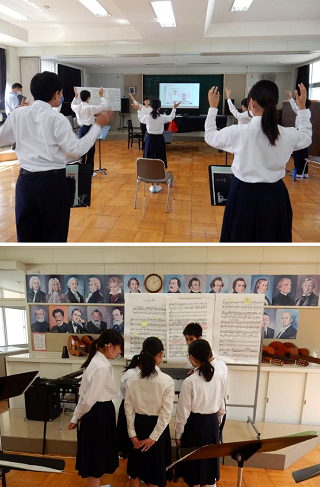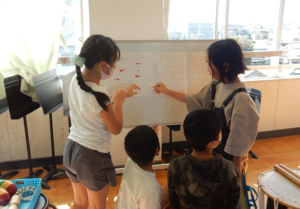2022.10.07
Music Class in Elementary & Junior High Schools
What is music class like in your city? Music is one of the subjects in Japanese compulsory education (elementary and junior high school). The Japanese Ministry of Education, Culture, Sports, Science, and Technology (MEXT) prepares curriculum guidelines for it, and classes in each municipal district are taught in accordance with them. In this article, we’d like to give you a taste of what music class is like in Hamamatsu!
Japanese children are required to undertake compulsory education from the ages of 6 to 15, with every subject during the 9 years aiming to develop students’ qualities and abilities in the following three areas:
(1) knowledge and skills, (2) the ability to think, to judge & to express themselves and (3) their motivation to learn & their humanity.
Music class is no exception to this and aims to develop their qualities & abilities in regards to sound, music, and musical culture in our daily life and society.
Its contents are divided into two areas: expression and appreciation. Expression includes the fields of instrumental music, singing, and composition.
In the study of instrumental music, first graders begin by learning instruments they are familiar with, such as the keyboard harmonica. Then in the third grade, they progress to the recorder and then onto the alto recorder when they enter junior high school. Depending on what their school offers, they may also get the chance to play the guitar, koto (Japanese harp), shamisen (Japanese guitar), taiko (drums), or shakuhachi (bamboo flute). In Hamamatsu, most students study the guitar, koto, or shamisen. Students also have the opportunity to train their sense of rhythm from an early age by playing the castanets and tambourine and can acquire basic performance skills by playing keyboard harmonicas.
In singing class, students sing a variety of songs ranging from nursery rhymes to pop music. Class choirs are very popular in junior high schools and the idea of learning through music extends outside of music class and is used to bring students together.
Through composition classes, students learn to create cohesive music using simple sounds and rhythms. For example, junior high school students try their hand at creating 4-bar songs. Through this experience of creating music themselves in a playful and enjoyable way, the students can get a sense of creative expression and a better perspective when it comes to appreciating music.
Whilst the acquisition of knowledge is certainly emphasized in the current curriculum guidelines, there is also an importance placed on learning how to express one’s thoughts and feelings too.
Another unique feature of Japanese music classes is the traditional Japanese instruments such as koto and shamisen. These classes aim to develop the qualities and abilities of its students as they interact not only with the musical culture of Japan, but also that of other countries.
So, how does your city compare? What is music class like in your city?









